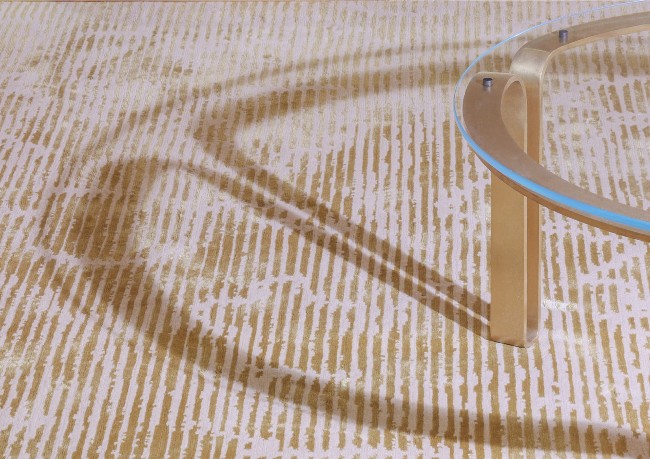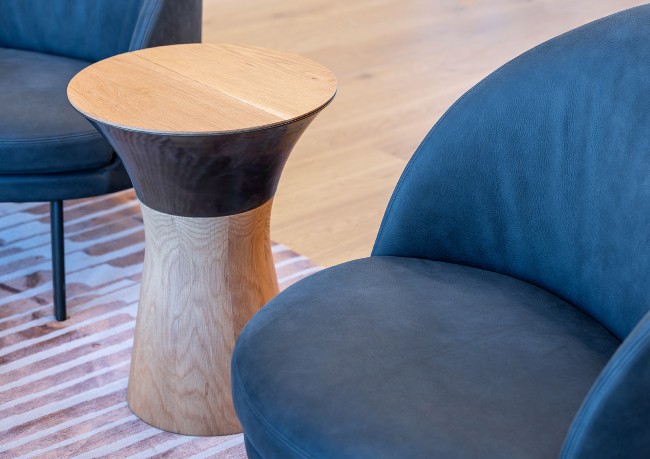With Australians discarding approximately 800,000 tonnes of furniture annually, the need for thoughtful and durable design has never been greater. To explore how the industry can address this crisis, Architecture & Design’s Digital Editor Clémence Carayol sits down with Alec Tzannes, Director of Tzannes.
Renowned for his commitment to timeless, sustainable design, Tzannes shares insights into his approach to creating furniture that transcends trends, respects materials, and endures for generations. In this exclusive interview, he discusses the philosophy behind "deep design," the importance of artisan skills, and the role of Australian identity in shaping the future of sustainable furniture.
Architecture & Design: With Australians discarding around 800,000 tonnes of furniture annually, how does Tzannes Architect view the relationship between design and this waste crisis?
Alec Tzannes: Interior architecture and artefacts are significant contributors to the carbonisation of the world. This is a very serious issue.
My interest in furniture design began during university, and an early experience shaped my perspective. I worked in an office that had a piece of solid mahogany furniture from the Georgian era (circa 1720). This piece was still in use in the 1980s. Its enduring functionality and craftsmanship left a strong impression, demonstrating the value of long-lasting, thoughtfully designed furniture.
Our approach aims to combat the disposable culture. Our furniture is designed to be cherished, retained, and passed on for generations. By using high-quality materials with integrity, we ensure longevity and minimise embodied energy waste. This approach creates artefacts that endure for centuries, countering the throwaway culture.
Can you elaborate on what you mean by "thoughtful design" and how it contributes to reducing furniture waste?
I call it "deep design." This approach goes beyond imagery or trends. It begins with first principles, ensuring that designs are durable, functional, and true to their materiality. Thoughtful design is grounded in building physics, artisan skills, and the proper use of materials.
This philosophy avoids short-term, fashionable designs that quickly become outdated. Instead, we aim to create objects that are of their time but also timeless. The goal is to make designs that age gracefully and maintain relevance, enduring across generations.

The Neilson Table/supplied
What specific high-quality materials do you prioritise in furniture design to combat the disposable nature of consumer products?
We prioritise materials that are integral and enduring, such as solid timber, solid bronze, brass, stainless steel, and glass. We avoid materials that rely on surface coatings or are not thorough in their construction. For instance, veneers or overlays can degrade over time, whereas solid materials retain their integrity. This approach ensures that our pieces withstand wear and tear while remaining beautiful and functional.
Your practice recently won awards for its furniture. Can you discuss what distinguishes these pieces and how they reflect your sustainable design philosophy?
The Neilson Table and the Houseman Side Table won awards for their innovation and sustainable principles.
The Neilson Table employs advanced technology to bend solid bronze or brass into complex, three-dimensional shapes. This minimises material usage while ensuring structural stability. Its flexibility allows for various sizes and finishes, such as glass, stone, or timber tops, making it versatile and durable.
The Houseman Side Table, designed by, Carl Holder, a colleague in our practice, combines solid metal with a timber top. It features a concealed storage compartment for practical use, such as storing keys or charging devices. Both tables emphasise craftsmanship, longevity, and adaptability, with applications in both residential and commercial spaces.
In your experience, how does consumer behaviour impact the lifecycle of furniture, and what can be done to promote more sustainable choices?
Consumer behaviour can vary widely. Some may discard items they no longer like, while others might misuse furniture through carelessness. To address this, we focus on durability and robustness.
For example, solid timber furniture can be rejuvenated through light sanding, oiling and polishing, maintaining its value over time. The goal is to create furniture that people perceive as valuable, encouraging them to keep or recycle it rather than dispose of it. By designing for longevity, we counteract the throwaway culture and promote sustainable use.

The Houseman Side Table/supplied
How does Tzannes measure the environmental impact of furniture designs, and what metrics are most critical?
We rely on our in-house Regenerative Futures research team Study Group to stay updated on the science of sustainability. Key metrics include:
● Aesthetic value: Beautiful designs are cherished and less likely to be discarded.
● Material extraction and recycling: We prioritise recycled or recyclable materials, such as reclaimed timber.
● Embodied energy: Calculating the energy used in production to influence design decisions and the ability to recycle components such as glass and metals.
● Longevity: Ensuring materials and designs are durable enough to last for centuries.
● Assembly and Disassembly: designing for transportation and recycling with minimal material loss.
Our designs aim to minimise waste and environmental harm while maximising usability and beauty.
How can industry stakeholders and decision-makers support a shift towards more sustainable furniture practices?
Stakeholders should consider environmental, social, and economic sustainability:
● Environmental sustainability: Encourage the use of recycled materials and designs that last.
● Social sustainability: Preserve artisan skills by designing for craftsmanship. This approach supports local artisans and maintains traditional knowledge.
● Economic sustainability: Develop efficient manufacturing processes that reduce costs without compromising quality. For example, using a single set of tools for multiple products streamlines production and minimises waste.
By aligning these principles, stakeholders can foster a sustainable and thriving furniture industry.
What advice would you offer to emerging designers and architects who want to incorporate sustainability into their work?
Sustainability must be central to their approach. Emerging designers should:
● Reduce waste and eliminate throwaway designs.
● Use and detail materials respectfully, prioritising recycled or recyclable options.
● Balance aesthetics with scientific knowledge, integrating durability and material physics into their designs.
● Aim to create functional and beautiful objects that are both sustainable and enduring.
Today, design is a fusion of art and science, requiring a comprehensive understanding of materials, durability, and environmental impact.
Looking ahead, what trends do you believe will shape the future of sustainable furniture design in Australia?
While I cannot predict trends, I see opportunities in incorporating First Nations perspectives. Their understanding of space, time, and the environment offers unique insights into sustainable design.
Australia’s rich cultural history can inspire distinctive designs, much like how Scandinavian or Italian design aesthetics are distinctive are recognisable globally. By embracing these values, we can create furniture that reflects our identity while being environmentally responsible, which in itself could be one of the more definable characteristics of an emerging Australian aesthetic.
Image: Alec Tzannes/supplied

